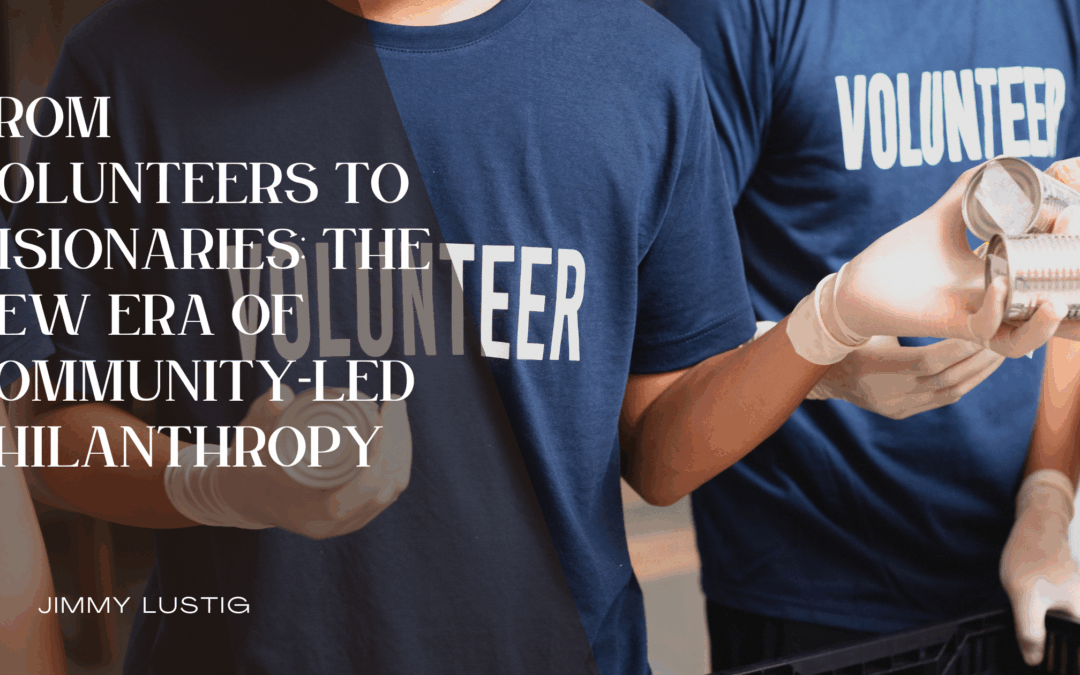Philanthropy is undergoing a remarkable transformation. What was once shaped primarily by large institutions, legacy donors, and top-down decision-making is now being redefined from the ground up. Across cities, small towns, and digital communities, everyday people are stepping into roles that go far beyond volunteering. They are not just offering their time—they are shaping strategies, influencing priorities, and designing solutions to the issues that impact their own neighborhoods. This shift marks the rise of community-led philanthropy, a new era where volunteers evolve into visionaries and collective action becomes a driving force for long-term change.
The Rise of Grassroots Leadership
For decades, philanthropy largely followed a traditional model: institutions decided where funds went, community members provided labor, and the two rarely intersected. But communities have become more vocal, more informed, and more empowered. People who once stood on the sidelines are now leading conversations, proposing initiatives, and participating in the decision-making process.
This rise of grassroots leadership has reframed what it means to “give back.” Volunteers today aren’t simply filling gaps—they are identifying them. They aren’t waiting for change—they are initiating it. Whether it’s establishing mutual-aid networks, leading local fundraising efforts, or launching micro-grant programs for neighborhood projects, community members are proving that vision is not the exclusive domain of institutions.
Why Community-Led Philanthropy Works
At the heart of this shift is a simple truth: communities know what communities need.
Local residents experience challenges firsthand—whether it’s food insecurity, lack of green spaces, youth programming gaps, or mental health support shortages. Because they live these realities, they have an intimate understanding of what solutions are practical, meaningful, and culturally relevant.
Community-led philanthropy succeeds because:
-
It is responsive. Needs are identified and addressed quickly instead of waiting for slow-moving systems.
-
It is inclusive. Decision-making involves the people most affected by the issues.
-
It is efficient. Resources are deployed where they matter most, without bureaucratic lag.
-
It is rooted in trust. People feel ownership over the work, which increases participation and sustainability.
This model transforms generosity from an act of charity into an act of empowerment—something that resonates deeply in today’s social landscape.
Volunteers Becoming Visionaries
The most inspiring aspect of this movement is how everyday citizens are stepping into visionary roles. A volunteer who once handed out meals now coordinates food-distribution logistics for hundreds of families. A parent who once attended school events now leads education advocacy groups. A student who once joined beach cleanups now runs environmental awareness campaigns.
These shifts are happening because modern volunteers bring more than time—they bring ideas, lived experience, and a desire to co-create change. They’re not waiting to be guided; they are guiding. They’re not accepting existing systems; they are reshaping them.
Three qualities distinguish these new visionaries:
-
Creativity: They reimagine old problems with fresh thinking.
-
Collaboration: They build networks, bridge divides, and inspire collective action.
-
Courage: They challenge traditional models and take initiative even without formal authority.
This blend of traits is pushing philanthropy into an era defined by innovation and inclusivity.
Technology as a Catalyst for Community Power
Digital platforms have accelerated this transformation. Social media campaigns, crowdfunding sites, neighborhood apps, and instant messaging groups have made it easier to organize efforts, raise money, and mobilize people quickly.
What once required weeks of planning can now be launched in hours. A single viral post can raise thousands for a family in need. A neighborhood WhatsApp group can coordinate support during emergencies. A community platform can track local needs and connect volunteers with resources.
Technology hasn’t replaced traditional philanthropy—it has democratized it.
Building Sustainable, Community-Owned Impact
The most powerful impact of community-led philanthropy is its long-term sustainability. When people feel ownership over an initiative, they are more invested in its success. Community gardens thrive because neighbors maintain them. Local mental health circles grow because participants invite others. Small scholarship funds flourish because students become future donors.
This model creates a cycle of involvement and empowerment that traditional charity structures often struggle to achieve.
The Future of Philanthropy Is Personal
As the world becomes more interconnected yet simultaneously more local, philanthropy is shifting toward shared leadership. Communities no longer want to be the recipients of generosity—they want to be the architects of it. They want a voice, a stake, and a sense of agency.
Volunteers are no longer operating on the periphery. They are stepping into the center, offering not just hands but a vision of what their neighborhoods, cities, and networks can become.
The new era of community-led philanthropy is not defined by financial power but by collective passion. Not by institutions alone but by people. Not by charity, but by collaboration.
And its impact is only just beginning.

